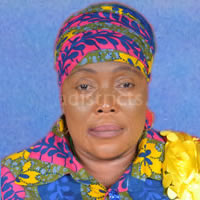Population Size and Distribution
The population of the Municipality was 139,283 (2010 population and housing census). With a growth rate of 3%, the population of the Municipality is 156,970 in 2014. The population growth in absolute terms within the medium term period (2014 to 2016) is 11%. Females constitute 51.5% of the population and males 48.5%. This indicates a sex ratio of 94.1 males per 100 females. The population density in 2010 was 78 persons per sq. km and 2013 it became 85 Persons per sq. km.
The working age group (19-60 years) accounts for 45% of the population and the dependency age group account for 55% of the population. The aged is about 3% of the population of the Municipality, whiles the school age group account for 52% of the population. 60.3% (94,702) of the Municipality’s population live in Rural Areas
Household Characteristics
There are more male household heads (10.6%) as compared to females (2.2%) and also there are more male children(51.1%) than female children (35.8%).This shows a greater percentage difference of male dominance with the female playing a supportive role in the household.
The average household size remains 8.7 with the smallest household comprising one member and the largest household having 47 members.
HUMAN SETTLEMENT PATTERNS
There are 149 communities in the Municipality. The communities are administratively demarcated into six Zonal Councils, namely, Savelugu, Nanton, Diare, Pong-Tamale, Moglaa and Tampion. The 143 other communities could be described as rural. About 60.3% of the populace resides in these rural communities and 39.7% in the few urban towns.
ENVIRONMENTAL SITUATION
The Municipality is located in an area of the country with unfavourable natural environmental conditions. There is little tree-cover and it suffers harsh harmattan seasons, which leads to many bush-fires set up by farmers clearing their lands and hunters searching for game. The greatest threat however is the rate at which the tree vegetation is being cut down for fuel wood. Farming along river courses has also caused vast silting of the few drainage systems which therefore dry up quickly in the dry season and flood easily in the wet season. Recent gravel winning on good farmlands alongside the major trunk road and sand winning for which a greater percentage is used for construction work in Tamale without efforts at reclamation is an issue of concern. Public places of convenience are inadequate and scarce in the area leading to indiscriminate defecation and waste disposal. The problems of poor disposal of solid and liquid wastes, slum conditions and sewage degradation of the physical environments are becoming a nuisance.
GENDER
Gender inequality persists in the Municipality and it is perpetuated by cultural norms. The inequality has to do with access and control over land, decision-making and the roles men, women, boys and girls perform in the domestic setting and outside the home.
Access and control
Women in the Municipality have access to land but have limited control over the land. Men cultivate their crops on fertile lands and the less fertile lands are given to women. It must be stated that most of the crops grown by women are vegetables or are used as soup ingredients, which are not grown in large quantities. Men have access to tractor services because they own them and also have access to farm inputs and labour than women and this often results in women farming in small lands with little yields. Decision-making:
Traditionally, decision making is top-down approach. The chief is the head of decision making. He takes decisions with his counsel of sub-chiefs who are men and the outcome is communicated to the subjects, though wives of chiefs in the Municipality often discuss with the chief off camera.
Gender Roles
DISTRIBUTION OF DOMESTIC ROLES OF MEN AND WOMEN
DOMESTIC ROLES OF GIRL-CHILD AND BOY CHILD
Parental influence on sex role development in children cannot be underestimated. Right from childhood there are different role expectations for girls and boys. Children are naturally, more inclined to initiate same sex models than opposite sex models, though they could probably initiate an adult to whom they are most disposed. By virtue of the fact that parents are readily available and powerful, they are the models children are pre-disposed to copy. The values of parents influence how they raise their children.
There is the need for gender mainstreaming in planning, implementation, monitoring and evaluation to ensure women and girls issues are fully captured and implemented. Data should be disaggregated to enable strategies to be developed to target women and girls as active and equal partners in the development. Irrigation facilities should be provided for women’s dry season gardening for vegetable production as this will improve their incomes.
There is the need for gender sensitization by focusing and understanding the problems faced by both women and men in society and the need for both to come together to take concrete and sustained decisions that will enhance their lives and that of their families.
Date Created : 11/18/2017 8:03:36 AM





 facebook
facebook twitter
twitter Youtube
Youtube TOLL FREE 0800 430 430
TOLL FREE 0800 430 430 +233 593 831 280
+233 593 831 280 GPS: GE-231-4383
GPS: GE-231-4383 info@ghanadistricts.com
info@ghanadistricts.com Box GP1044, Accra, Ghana
Box GP1044, Accra, Ghana